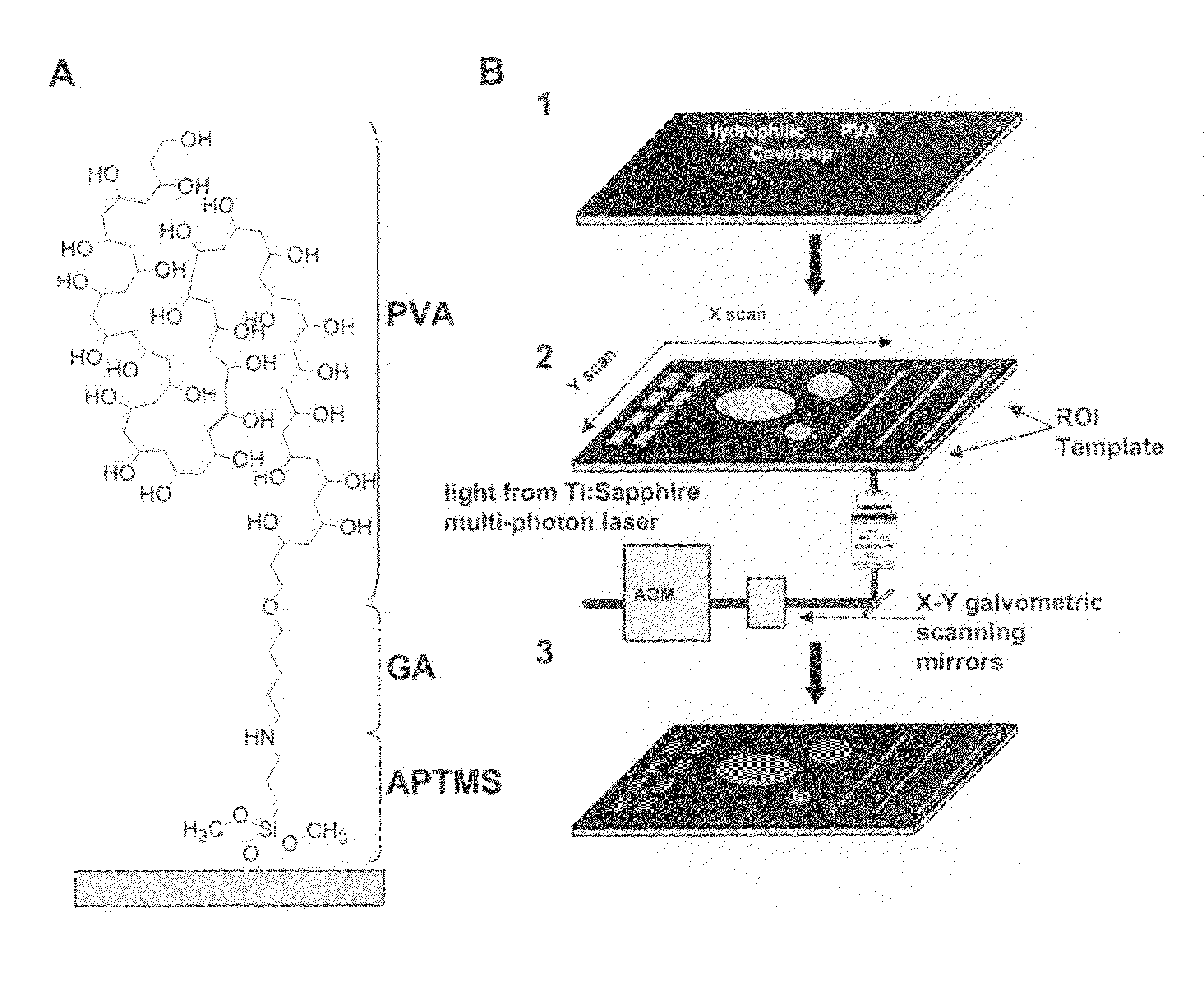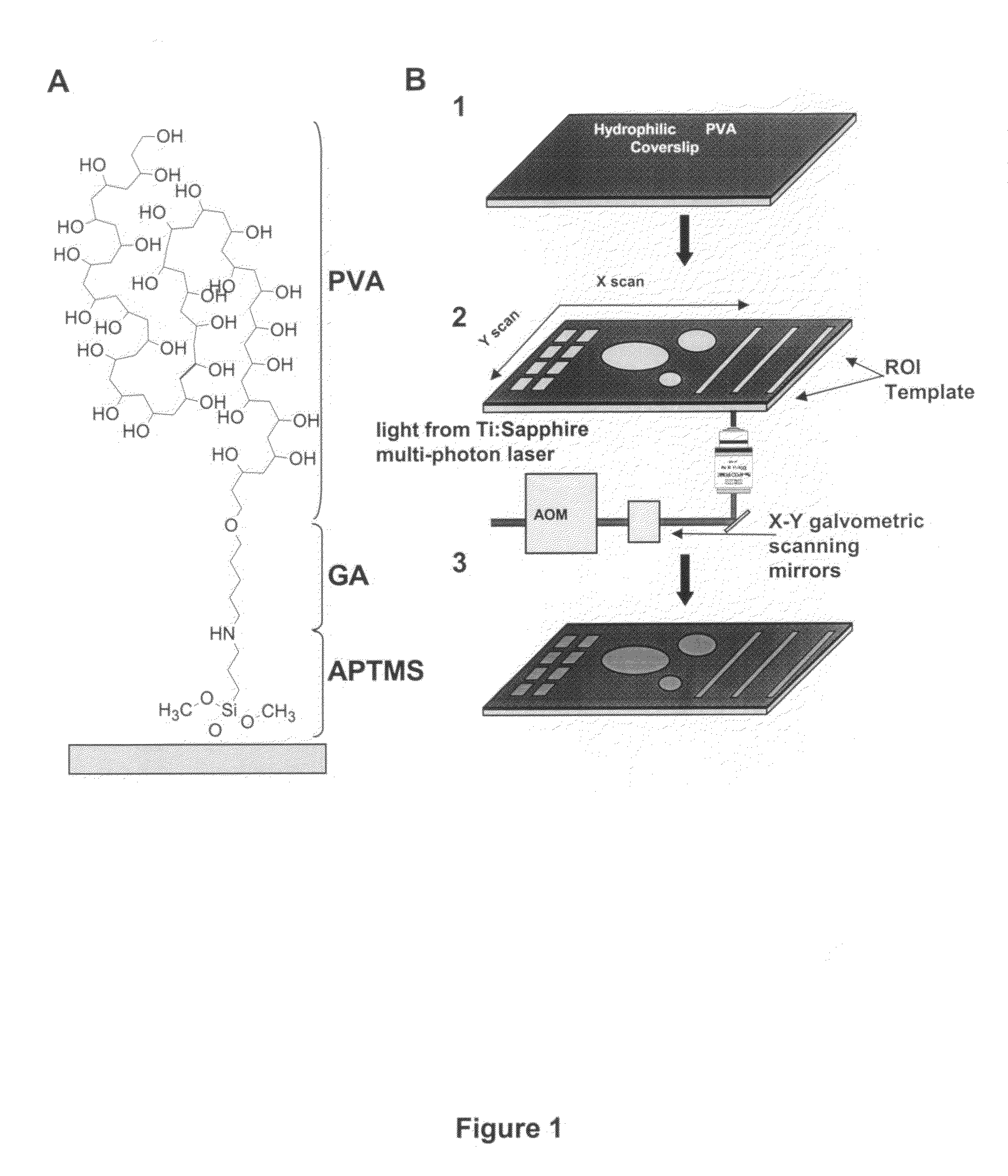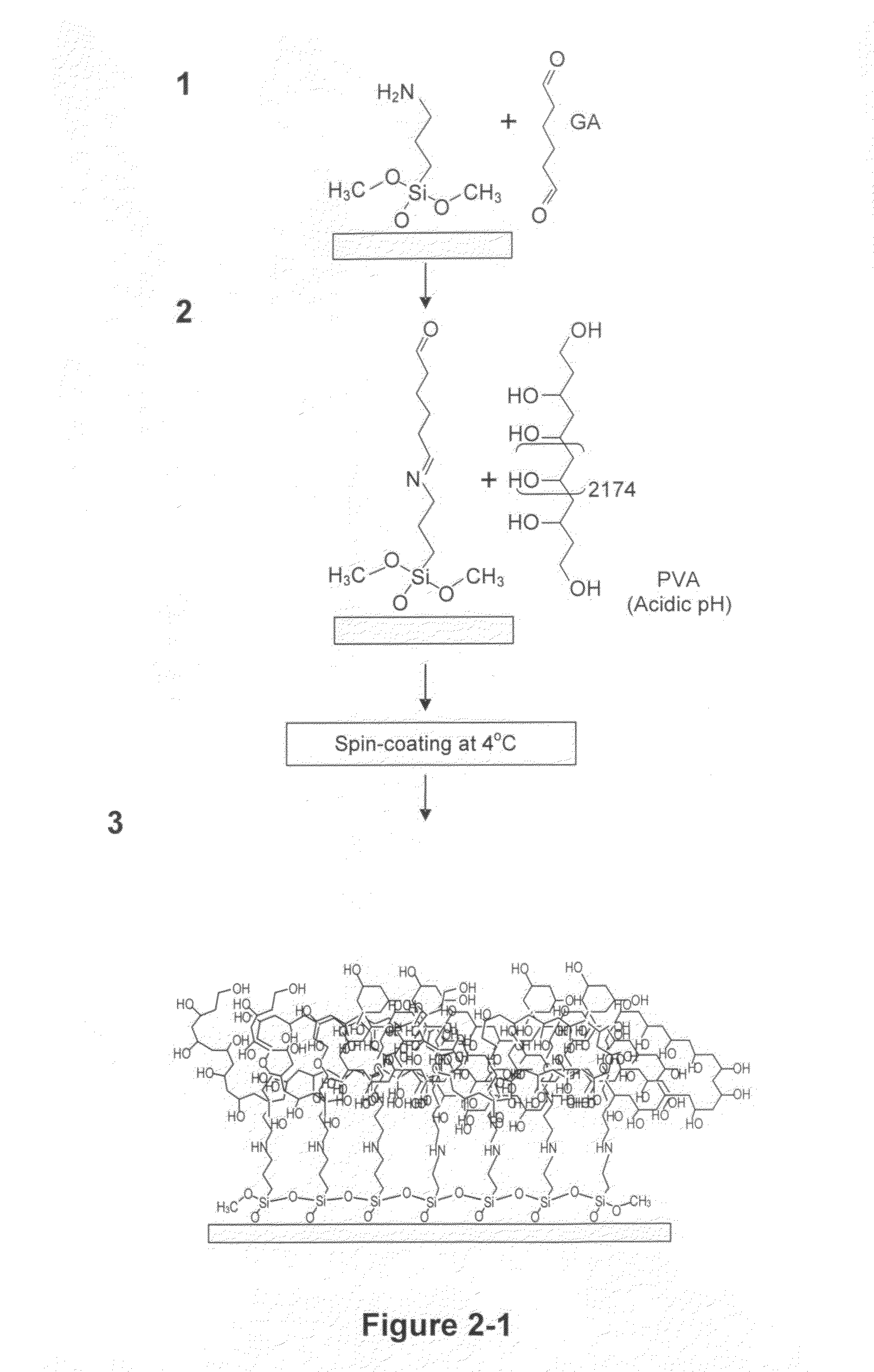Micropatterning of biological molecules using laser ablation
- Summary
- Abstract
- Description
- Claims
- Application Information
AI Technical Summary
Benefits of technology
Problems solved by technology
Method used
Image
Examples
example 1
Summary of Example 1
[0056]Photomicropatterns were prepared for use in investigating the role of ECM topography in cell migration. In this example, it was found that a thin (˜0.1 μm) macromolecular PVA monolayer was sufficient to block cell attachment. Many other polymers including hydrogels derived from PVA, polyethylene glycol, and polyacrylamide are also susceptible to local photolytic ablation (Yamato, M. et al., J. Biomed. Mater. Res. A., 67:1065-71 (2003)). A two-photon confocal microscope was used to ablate precise patterns in the PVA film. Through the computer-controlled ‘region of interest’ (ROI) function, as many as several hundred ablation spots per field of view could be generated and stored as templates. These templates could then be applied multiple times automatically through Zeiss AIM software to adjacent areas to generate a large array of a single pattern or any combination of patterns. To create smaller, more closely spaced patterns, we simply changed to a higher-ma...
example 2
Use of ECM Photomicropatterns to Investigate ECM Topographies in Fibroblast Migration
[0057]Utilizing the flexiblility of μPP, we generated multiple patterns to test roles of different ECM topographies in fibroblast migration.
Adsorption of ECM Protein
[0058]After local PVA ablation, ECM proteins were adsorbed to the etched surfaces; adsorption was dependent on the extent of ablation from the total amount of light energy focused on a given region. This method permits rapid design and testing of multiple patterns, such as lines, curves, dots, and any shape or size, coated with any ligand without needing the physical masks or stamps associated with photolithography or microcontact printing (Mrksich, M. et al., Proc. Natl. Acad. Sci. USA, 93:10775-8 (1996)). The high refractive index (>1.5) of PVA allows for live-cell fluorescence techniques such as total internal reflection microscopy (TIRM), even through non-ablated regions of the film, to observe dynamic changes in GFP-linked cytoskele...
PUM
| Property | Measurement | Unit |
|---|---|---|
| Hydrophilicity | aaaaa | aaaaa |
Abstract
Description
Claims
Application Information
 Login to View More
Login to View More - R&D
- Intellectual Property
- Life Sciences
- Materials
- Tech Scout
- Unparalleled Data Quality
- Higher Quality Content
- 60% Fewer Hallucinations
Browse by: Latest US Patents, China's latest patents, Technical Efficacy Thesaurus, Application Domain, Technology Topic, Popular Technical Reports.
© 2025 PatSnap. All rights reserved.Legal|Privacy policy|Modern Slavery Act Transparency Statement|Sitemap|About US| Contact US: help@patsnap.com



